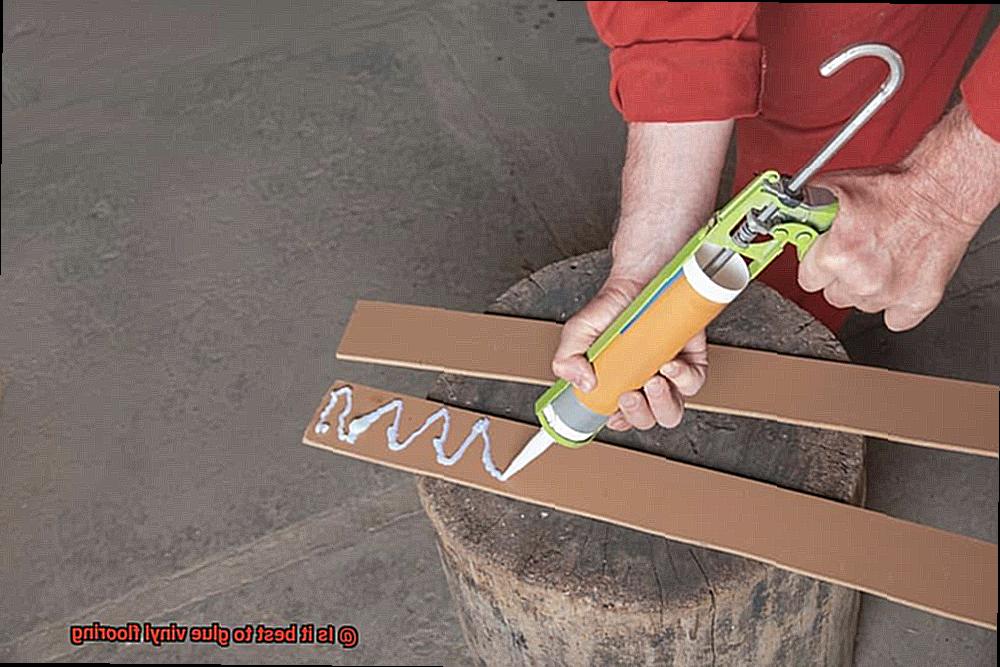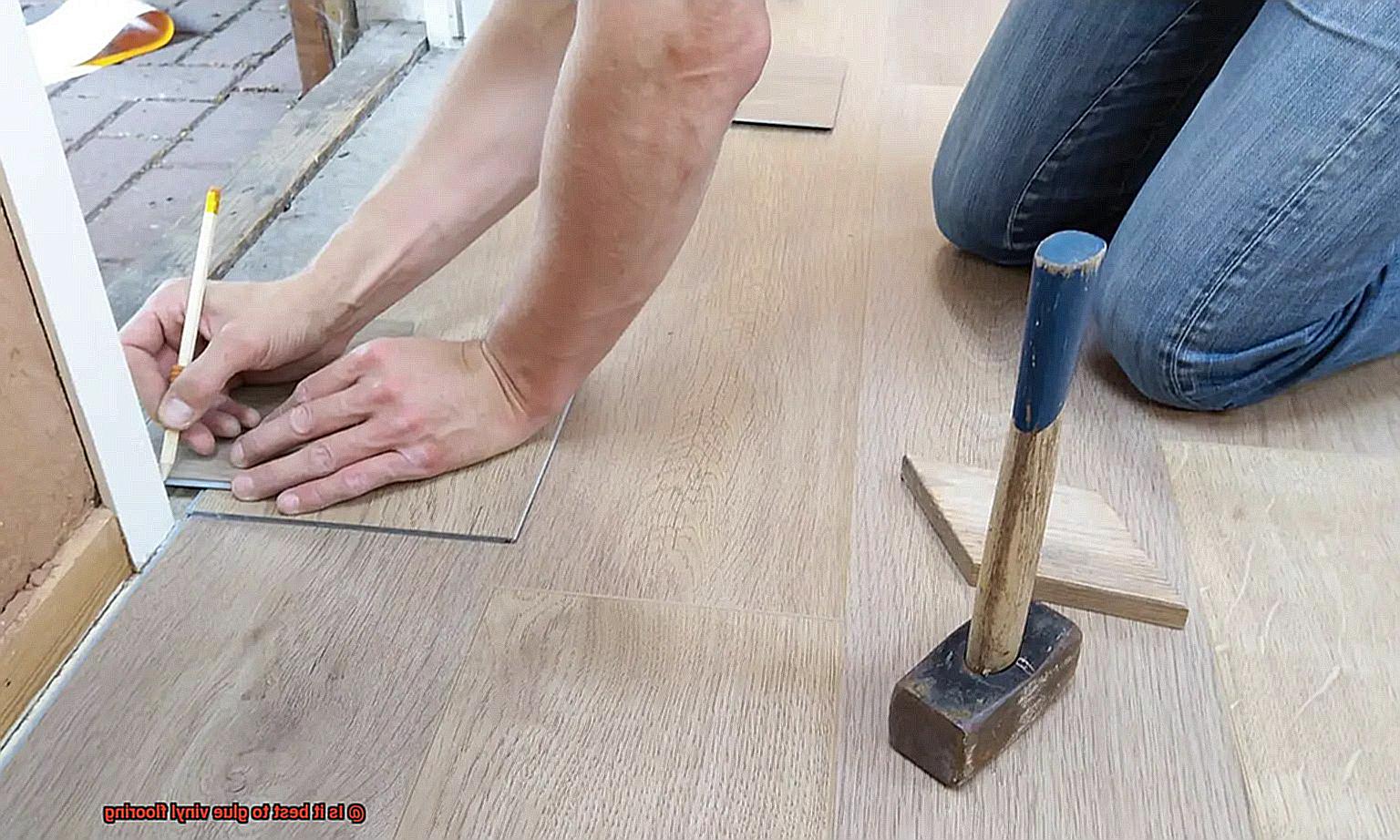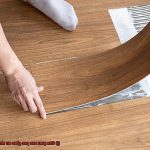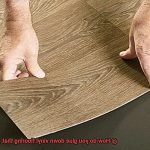Vinyl flooring is a popular choice for homeowners looking for an affordable and long-lasting flooring option. With its wide range of styles and colors, it’s no wonder why vinyl flooring has become a go-to solution for many. But when it comes to installation, the question of whether to glue or not to glue can be a puzzling one.
Gluing vinyl flooring involves adhering the tiles or planks directly to the subfloor using an adhesive. However, some vinyl options come with pre-attached adhesive, allowing for a floating installation. So which method is better? The answer is not straightforward and depends on several factors unique to your situation.
In this blog post, we will delve into the pros and cons of gluing vinyl flooring and help you decide if it’s the right choice for you. We’ll explore critical factors such as subfloor type, room size, and traffic level that can influence your decision. Additionally, we’ll offer practical advice on how to prepare your subfloor correctly and select the best adhesive for your vinyl flooring.
If you’re considering installing vinyl flooring in your home but unsure whether to glue or not to glue, read on. This post will equip you with everything you need to make an informed decision that suits your preferences and needs.
Advantages of Glue Vinyl Flooring
Contents
Look no further than glue vinyl flooring. This versatile option is a homeowner and commercial space favorite for a reason. Let’s dive into the advantages of choosing glue vinyl flooring.
Firstly, durability is key. Glue vinyl flooring can handle a lot, making it ideal for high-traffic areas like hallways, kitchens, and living rooms. And if you have children or pets, no need to worry about scratches or stains.
Secondly, maintenance is a breeze. Say goodbye to the hassle of waxing or polishing. All you need is a damp cloth or mild detergent solution to keep your floor clean and shining.

Thirdly, water resistance is a must-have feature in areas prone to moisture such as bathrooms, laundry rooms, and basements. This flooring can handle spills and splashes without warping or buckling.
Fourthly, versatility is key. With a wide range of colors, patterns, and textures to choose from, you can find a style that complements your interior décor. Plus, it can mimic the look of hardwood, stone or tile at a fraction of the cost.
Lastly, installation is easy. With the right tools and instructions, it can be done as a DIY project over most subfloors including concrete, wood, and existing vinyl.
Disadvantages of Glue Vinyl Flooring
If you’re considering vinyl flooring, it’s important to know the two primary installation methods: glue-down and floating. While glue-down vinyl flooring may have its advantages, it’s crucial to be aware of the potential disadvantages before making a decision.
As an expert on this topic, I can tell you that there are several significant downsides to glue-down vinyl flooring. Firstly, the installation process can be challenging and time-consuming. Unlike floating vinyl flooring, glue-down requires a lot of preparation work. The subfloor must be entirely clean, dry, and level before installation can even begin. This means that not only does it take more time, but it can also cost more money.
The second disadvantage is that removing glue-down vinyl flooring can be messy and even harmful. Once the adhesive has fully cured, it creates a strong bond between the vinyl and subfloor. To remove it, you’ll need to use solvents or other chemicals that can be messy and potentially harmful. Therefore, replacing the flooring in the future may be more challenging than expected.
Thirdly, mistakes during installation can be costly. If the vinyl is not positioned correctly during installation, it can be challenging to adjust or reposition without damaging the material or compromising the adhesive bond. This means that any errors made during installation could result in having to replace the entire floor.
Lastly, glue-down vinyl flooring is typically more expensive than floating options. In addition to the cost of materials, the installation process itself can be more labor-intensive and time-consuming, which can drive up the overall cost of the project.
Other Common Installation Methods for Vinyl Flooring
In fact, there are four common installation methods to choose from depending on your specific needs.
First up is floating installation. This method involves laying interlocking click-lock vinyl planks or tiles over an underlayment without any adhesive. It’s a breeze to install and perfect for DIYers, but keep in mind that it may not be as durable as glued-down vinyl.
Next, there’s peel-and-stick installation. As the name suggests, this method involves applying adhesive directly to the back of the vinyl tiles or planks before placing them onto the subfloor. It’s quick and easy, but may not be as long-lasting as glued-down vinyl. Peel-and-stick vinyl flooring is best suited for small areas or temporary installations.
Another option is loose lay installation. This involves laying the vinyl planks or tiles directly onto the subfloor without any adhesive or locking mechanisms. The weight of the flooring holds it in place, making it easy to remove and replace if necessary. Loose lay installation can be a good option for uneven subfloors or areas with high moisture levels.
Lastly, there’s glue-down installation, which involves applying adhesive directly to the subfloor before placing the vinyl planks or tiles on top. While this method has been a tried-and-true option for decades, it can be time-consuming and difficult to remove if necessary.
When deciding which installation method to use for your vinyl flooring project, consider factors such as the type of vinyl being installed, the condition of the subfloor, and personal preference. Each method has its own pros and cons.
Pros and Cons of Floating Vinyl Flooring
Look no further than floating vinyl flooring. This type of flooring offers many benefits, including versatility, durability and easy installation.
One of the biggest advantages of floating vinyl flooring is its versatility. It can be installed over most types of subfloors, which means you may not have to remove your existing flooring before installation. This can save you time and money on installation costs. Plus, floating vinyl flooring is highly durable and resistant to scratches, stains and moisture. This makes it a great choice for high-traffic areas like kitchens and bathrooms.
However, there are some potential drawbacks to consider as well. One of the main drawbacks is that floating vinyl flooring can be noisy underfoot. This is due to the fact that it’s not directly attached to the subfloor, which can create a hollow sound when walked on. But, fear not. You can easily mitigate this by using an underlayment or choosing a thicker product.
Another potential issue with floating vinyl flooring is that it may not be as stable as other types of flooring. It can expand and contract with changes in temperature and humidity, which can cause gaps or buckling if not properly installed or maintained.
Pros and Cons of Click-Lock Vinyl Flooring
Look no further than click-lock vinyl flooring. This type of flooring has become increasingly popular due to its quick and simple installation process and ability to withstand heavy foot traffic, scratches, and stains. However, as with any flooring choice, there are both pros and cons to consider.
One of the main advantages of click-lock vinyl flooring is its ease of installation. Unlike traditional vinyl flooring that requires adhesive or glue, click-lock vinyl flooring can be installed quickly and easily without any special tools or adhesives. This not only saves time but also reduces the cost of installation, making it an affordable option for many.
In addition to its easy installation process, click-lock vinyl flooring is also highly durable. Made from high-quality materials, this type of flooring is water-resistant, making it a top choice for areas prone to moisture such as bathrooms and kitchens. It can withstand heavy foot traffic, scratches, and stains, ensuring a long-lasting investment.
However, it’s important to consider the potential drawbacks of click-lock vinyl flooring as well. One issue to keep in mind is that the seams between the planks may become visible over time, especially if the subfloor is not perfectly level. This can create an uneven appearance that may not be desirable for some homeowners.
Another potential disadvantage of click-lock vinyl flooring is its stability. Since the planks are not glued down, they may shift or move slightly over time which can create gaps or spaces between the planks. This could pose a problem in high-traffic areas where the flooring may be subject to heavy wear and tear.
Ultimately, the decision whether or not to choose click-lock vinyl flooring over traditional glued-down vinyl flooring depends on your specific needs and preferences. If you’re looking for a quick and easy installation process and a durable, water-resistant option that can save you money on installation costs, click-lock vinyl flooring is a great choice. However, if you’re concerned about visible seams or stability issues, traditional glued-down vinyl flooring may be a better option.
Factors to Consider Before Installing Vinyl Flooring
It’s important to weigh up the pros and cons of gluing vinyl flooring before making a decision. Here are some key factors to keep in mind:
Firstly, consider the condition of your subfloor. If it’s uneven or has imperfections, gluing down the vinyl can help create a smoother and more stable surface.
Secondly, the size and layout of your room can also impact your decision. In larger or more complex rooms, gluing the flooring down can make for a secure installation that prevents shifting or movement over time.
Thirdly, think about the amount of foot traffic your room will experience. High-traffic areas like hallways and entryways may benefit from glued-down vinyl flooring as it can prevent wear and tear over time.
Fourthly, moisture levels in the room are another crucial factor to consider. While vinyl flooring is water-resistant, gluing it down can help prevent water from seeping underneath and causing damage in rooms prone to moisture such as bathrooms or laundry rooms.
Finally, take into account the time you have for installation as gluing vinyl flooring takes longer than floating installations. If you’re on a tight schedule, a floating installation may be a better option.
3A1zJNltcs0″ >
Conclusion
In conclusion, the best installation method for vinyl flooring depends on various factors and personal preferences. While gluing vinyl flooring offers durability, water resistance, easy maintenance and versatility, it may not be suitable for everyone due to its challenging installation process and difficulty in removal.
Floating installation, peel-and-stick installation, loose lay installation and click-lock vinyl flooring are other popular options that come with their own set of advantages and disadvantages. It’s crucial to consider factors such as subfloor condition, room size and layout, foot traffic levels and moisture levels before making a decision.
I highly recommend seeking professional advice or conducting thorough research before starting a vinyl flooring project. By taking the time to prepare adequately and weigh all options carefully, you can achieve a successful and long-lasting vinyl flooring installation that meets your unique needs.
So whether you’re looking for a sleek modern finish or a classic rustic look, there’s no doubt that vinyl flooring is an excellent choice for any home. With its affordability, durability and ease of maintenance, it’s no wonder why more homeowners are opting for this versatile option.






